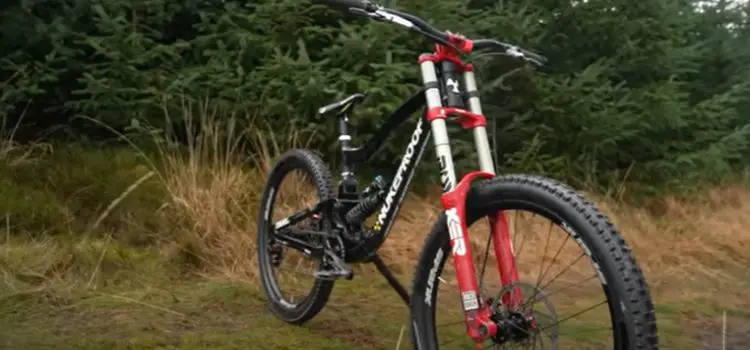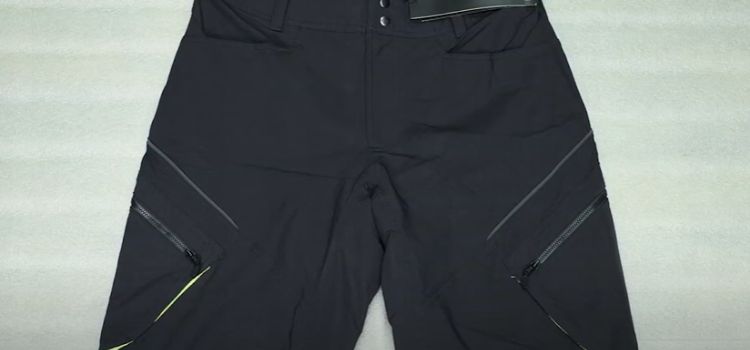Are 26-Inch Mountain Bikes Obsolete?
As an Amazon Associate I earn from qualifying purchases.
Mountain biking, with its ever-evolving technology and an array of wheel sizes, has seen a significant shift in recent years. The emergence of 27.5-inch and 29-inch mountain bikes has left many enthusiasts questioning the relevance of the classic 26-inch wheel size.
Are 26-inch mountain bikes truly obsolete, or do they still have a place in the dynamic world of cycling?

Exploring the Nimble Nature of 26-Inch Mountain Bikes
One of the standout features of 26-inch mountain bikes is their nimbleness. In the realm of tight and technical trails, these bikes offer riders a distinct advantage.
The smaller wheel size allows for easier maneuverability, making it a preferred choice for riders navigating challenging single-track paths. The nimble nature of 26-inch mountain bikes lends itself well to riders who value precision and quick handling.
Lightweight Advantage
Another compelling aspect of 26-inch mountain bikes is their relatively lighter weight when compared to their larger counterparts. In the world of mountain biking, every ounce matters, especially on long rides where energy conservation is crucial.
The reduced weight of 26-inch bikes can be a game-changer for riders aiming to tackle extended trails without feeling weighed down. This lightweight advantage makes them an attractive option for those seeking a more efficient and less strenuous riding experience.
Trade-offs and Considerations
While 26-inch mountain bikes boast nimbleness and a lighter build, there are trade-offs to be considered. The smaller wheels find it more challenging to roll over obstacles, and they do not provide the same level of stability and traction as the larger wheels.
Riders must weigh these trade-offs against the specific demands of their chosen terrain and riding preferences.
The Current Landscape
As we delve into the current landscape of mountain biking, it’s evident that the industry has undergone significant transformations in recent years. The once-universal dominance of 26-inch mountain bikes has evolved into a diverse array of wheel sizes, with 27.5-inch and 29-inch models taking center stage. However, amidst this evolution, the 26-inch wheel size remains resilient, refusing to fade into the background completely.
Industry Trends
The trend towards larger wheel sizes, particularly 29-inch, has been unmistakable. Many manufacturers now prioritize the production of bikes with these larger wheels, citing advantages such as increased speed, improved traction, and enhanced stability. This trend has led to a proliferation of 29ers on the market, making them a popular choice among riders seeking the latest in mountain biking technology.
The 27.5-inch wheel size, often considered a compromise between the agility of 26-inch wheels and the momentum of 29-inch wheels, has also gained substantial traction. This intermediate size caters to riders who value a balanced approach, offering a blend of nimbleness and stability.
While these larger sizes dominate the marketing spotlight, the market still acknowledges the demand for 26-inch mountain bikes. Certain manufacturers continue to produce and update their 26-inch models, recognizing the enduring appeal and unique advantages that these bikes bring to certain riders.
Diversity in Rider Preferences
The mountain biking community is diverse, comprising riders with varying preferences, styles, and terrain choices. While some enthusiasts enthusiastically embrace the latest technological advancements and opt for larger wheel sizes, others remain steadfast in their love for the classic 26-inch bikes.
This diversity in preferences is a testament to the multifaceted nature of mountain biking. Riders seek different qualities in their bikes, and the choice of wheel size often aligns with their individual riding styles, the type of trails they frequent, and personal comfort preferences.
Niche Appeal
Within this diverse landscape, 26-inch mountain bikes carve out a niche for themselves. They cater to riders who prioritize nimbleness and maneuverability, valuing the playful and responsive nature of smaller wheels. This niche appeal ensures that 26-inch bikes continue to have a place in the market, even as larger sizes dominate the mainstream.
Manufacturers Responding to Demand
While the production of 26-inch mountain bikes is not as widespread as it once was, certain manufacturers actively respond to the demand from riders who appreciate the unique characteristics of these bikes. Updated models and innovative designs demonstrate that the industry acknowledges and respects the legacy of 26-inch wheels.
Rider Communities
The passion for 26-inch mountain bikes extends beyond the products themselves; it permeates rider communities. Online forums, social media groups, and local biking clubs dedicated to 26-inch bikes thrive, fostering a sense of camaraderie among enthusiasts. This shared love for a classic wheel size transcends mere functionality; it becomes a cultural and community-driven phenomenon.
In the current landscape of mountain biking, the narrative surrounding 26-inch mountain bikes is not one of obsolescence but of resilience and adaptability.
Future Prospects
The question of whether 26-inch wheels will become obsolete in the future remains open. Larger wheels are favored for their increased speed, improved traction, and smoother rides, indicating a potential shift away from the classic 26-inch size.
However, the future of mountain biking is inherently diverse, and the industry’s evolution doesn’t necessarily mean the complete eradication of 26-inch wheels. The preferences of individual riders, as well as ongoing technological innovations, will continue to shape the landscape.
Are 26-Inch Mountain Bikes Suitable for Adults?
Despite the advancements in mountain biking technology, the 26-inch wheel size remains a viable option for adults. The nimbleness and ease of maneuverability make them suitable for riders who prioritize agility over the potential advantages offered by larger wheels.
While the industry may trend towards larger sizes, it’s essential to recognize that personal preferences, riding style, and budget considerations play a significant role in choosing the right mountain bike.
Age Considerations
Determining the appropriateness of a 26-inch mountain bike for adults involves considering factors beyond height. While 26-inch bikes are generally recommended for riders between 5’6″ and 5’9″, individual preferences and riding styles also come into play.
Some adults may find the nimble characteristics of 26-inch bikes appealing, especially if they prioritize maneuverability on tight trails.
Budget-Friendly Option
For adults just getting into mountain biking or those on a budget, 26-inch mountain bikes provide a cost-effective entry point. The affordability of these bikes can be a deciding factor, allowing riders to explore the sport without a significant upfront investment.
As the industry leans towards larger sizes, 26-inch bikes continue to serve as a valuable and accessible option for adult riders.
Upgrading Considerations
Deciding whether to upgrade a 26-inch mountain bike depends on several factors. If the current bike is in good condition and meets the rider’s needs, there is no immediate need for an upgrade.
However, if performance issues arise or the rider’s skills advance to more technical trails, upgrading to a more capable bike becomes a consideration. Budget constraints and individual riding styles will influence the decision-making process.
Benefits Beyond the Trail: Repurposing Old 26-Inch Mountain Bikes
For many riders, an old 26-inch mountain bike may hold sentimental value as a first bike or a trusted companion on countless trails. Rather than relegating these bikes to the confines of a garage, there are creative ways to repurpose and breathe new life into them.
- Parts Harvesting:
- Even if the frame is no longer viable, salvaging components such as wheels, brakes, and derailleurs can be a sustainable practice.
- Reusing these parts on a new bike or selling them separately contributes to both cost savings and environmental conservation.
- Commute Conversion:
- Transforming an old 26-inch mountain bike into a commuter bike is a practical and eco-friendly option.
- By swapping out off-road tires for road-friendly ones, adding fenders, and incorporating a rack, riders can customize their bikes for their daily commuting needs.
- Cross-Training Companion:
- For those seeking diversity in their workout routines, repurposing a 26-inch mountain bike for cross-training can be an excellent option.
- Mountain biking, with its low-impact nature, offers a different dimension to endurance and strength training.
- Community Sharing:
- Consider sharing an old 26-inch mountain bike with friends, family, or the community.
- Introducing someone to the joys of mountain biking through a well-maintained and repurposed bike fosters a sense of camaraderie within the cycling community.
The Versatility of 26-Inch Wheels: Addressing the Speed Debate
The ongoing debate over whether 26-inch wheels are suitable for mountain biking often centers around speed considerations. While larger wheels, such as 29ers, are hailed for their speed advantages, the suitability of 26-inch wheels depends on a rider’s priorities and the type of terrain they frequent.
- Smoother Ride and Better Traction:
- Advocates of 26-inch wheels argue that they provide a smoother ride and better traction on rough terrain.
- The increased maneuverability allows riders to navigate technical trails with greater ease, enhancing the overall riding experience.
- Speed vs. Agility:
- The choice between 26-inch and larger wheels ultimately boils down to individual preferences.
- If a rider values a more agile and nimble bike that excels in tight turns, 26-inch wheels may align with their preferred riding style.
- Experimentation and Personalization:
- Riders are encouraged to experiment with different wheel sizes and find the option that best suits their needs.
- The best wheel size for mountain biking is a subjective choice that depends on factors such as personal preferences, riding style, and the specific demands of the chosen terrain.
Conclusion
The narrative surrounding 26-inch mountain bikes suggests that, while they may have been overshadowed by larger wheel sizes, they are far from obsolete.
The enduring appeal of 26-inch wheels lies in their nimble nature, lightweight advantage, and suitability for specific riding conditions.
The mountain biking community continues to embrace the versatility of 26-inch bikes, recognizing that personal preferences, budget considerations, and the love for a classic wheel size play pivotal roles in the evolving landscape of cycling.
Rather than viewing 26-inch mountain bikes as relics of the past, they deserve recognition for their enduring legacy and continued relevance in the diverse world of mountain biking.
Amazon and the Amazon logo are trademarks of Amazon.com, Inc, or its affiliates.






